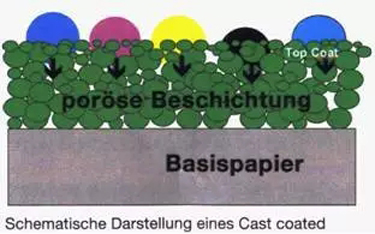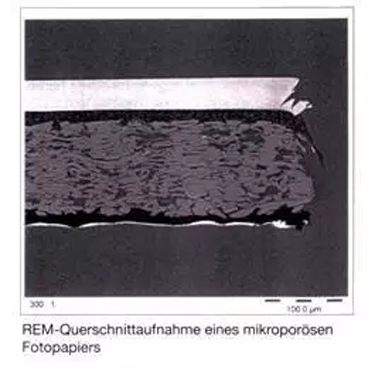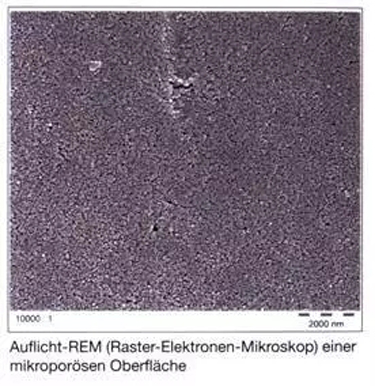There are many high-quality inkjet printing papers, but they are also confusing. An important indicator is the technical construction of the paper and the coatings used thereby.
Generally speaking, inkjet printing media manufacturers distinguish between dye ink and new generation pigment ink printing systems. ?? Ink paper has four different coatings in use. These coatings either absorb the colorant or leave the colorant only on the surface.
In addition, there are many differences in each coating technology according to the manufacturer and production process, so that the coating can be optimally matched with ink, printing method and substrate.
Porous coating
The coated paper is very cost-effective, ranging from 80g / m2 plain paper to 500g / m2 (such as art paper). The surface has a so-called quick-drying coating. This paper uses a silicon-based coating with additional additives such as adhesives and brighteners. The coating can be formulated separately according to the composition, the method of dissolving the additives and the application. In this way, manufacturers can achieve lower, medium and higher resolution like paper coming out of the darkroom.

For the size of ink droplets, the dissolution method of the inkjet material coating is critical. The larger the ink droplets, the faster the paper reaches the maximum color density. When the ink volume exceeds the maximum density range, there will be no color difference, but the printer greatly reduces the resolution, because then less ink droplets can be Ideal effect. Too much ink makes the paper thicker and cannot express different tones. This is a problem for matt art paper, because in principle art paper has a narrower color gamut than photo paper. From this perspective, the resolution of the printing system does not play an important role in the final effect on the printing paper. The decisive factor is whether the ink droplets produce large or small ink dots when they touch the surface of the paper. The shape and density of the dots formed are important, and this depends on the composition of the coating.
Since ordinary inkjet media does not have a barrier coating between the coating and the base paper, the ink can be driven straight in. Thin media and coatings cause the paper surface to undulate, which is called ink stacking. If the amount of ink is large, the pile of ink will cause the print head to move with the paper. Therefore, the thicker the coating, the slower the moisture enters the base layer, which delays the formation of the ripple phenomenon.
Swelling coating
This coating can be used on paper, photo paper and various films with a shielding coating? The grammage ranges from 120 g / m2 to 300 g / m2. For example, Sihl applied the shielding material as a waterproof layer on ordinary paper, which produced an effect similar to plastic coating. But the waterproofing of paper is never 100%, so when the amount of ink is large, slight ripples will still form.

The swelling coating is a water-swellable coating. Ink droplets soften the coating during printing and expand into the substrate. After swelling, the coating requires a longer drying time, mostly around 20 minutes, which complicates the actual application. During the drying process, the coating is very sensitive and cannot be touched.
Based on this characteristic of the swelling coating, it is only ideal for certain types of inks, so its versatility is narrow. For example, inks containing high-temperature evaporative liquid components (ethylene glycol) do not match this coating, because these components will bleed out on the surface, producing a colored oil film. The evaporation temperature of these components is between 280 ° C and 340 ° C, and it can be dried after a few weeks, or it can be accelerated by using an electric hair dryer and an oven.
In principle, this coating is currently only suitable for water-based dye inks, not pigment inks.
Most high-quality photo papers are coated on both sides and have several layers of substrate. The coating makes the paper less sensitive to climate change, and the coating layer does not have this effect.
The swelling coating is also slow to dry, so it can be problematic when using the fast printing mode on inkjet printers. Adjacent ink droplets encounter ink droplets that have adhered to the surface of the paper and merge with each other before they stop. This process continues to cause teardrops and uneven surface.
The biggest advantage of this coating is that the pigments in the molecular polymer are linked to each other, making it impossible for oxidizing gases such as ozone to contact the pigment. Compared with other technologies, the color stability of the coating obtained by using this technology is 5000 times greater . Prints stored in an indoor environment can be kept for many years.
Casting
Cast coated paper is generally 100 g / m2 to 240 g / m2, which is basically the further processing of matte inkjet paper. The process of reprocessing is first pouring a layer of 3-5μm thick microporous surface coating, and then drying with a high-gloss hot roller.

The reprocessed paper does not contain shielding materials, so there will be undulations during or after printing or even after printing is dry. The structure of the paper makes the production cost relatively low, so it can be sold as high-gloss paper with high cost performance. But it can not be used as a high-quality printing medium, because the ink color will be fixed through the top coat, because the top coat is not colorless and transparent, the color tone of the printed out is like a white gauze, and therefore Poor performance in photo restoration.
There is no restriction on the printing effect, but it will not match with some pigment inks. Like matt color inkjet paper, due to the open structure and large internal surface area, the pigment is easily oxidized and has poor stability. Printed copies should be placed in a file folder or stored under a glass plate.
Microporous coating
Generally 170 g / m2 to 300 g / m2, which is comparable to traditional silver salt photo paper, and pigment ink can produce ideal results. The paper structure of different manufacturers is different. Generally speaking, the base paper needs to be coated on both sides, and the surface treatment ranges from high gloss to matte. The microporous coating can be a single layer or multiple layers. The formula is close to the porous coating mentioned above, and only small particles need to be added (micron range = 10ˉ? M). This structure allows the surface of the paper to dry immediately, but like other coatings, the paper must be left for 10 minutes to evaporate water. If the print is clipped too early or placed under the glass plate, the remaining moisture and moisture will cross-color and become gray, because the indigo, magenta and yellow will produce gray. In principle, this phenomenon will appear on all ink paper surfaces.

Microporous coating surface under electron microscope

Section of RC waterproof photo paper under electron microscope
This coating is almost transparent, so the color is very good, much better than cast coated paper, can be said to be the true photo quality.
Silicone Cake Pan,Baking Pan,Bundt Cake Pan,9 Inch Cake Pan
Yangjiang Teammade Industrial Co., Ltd , https://www.yadokitchen.com